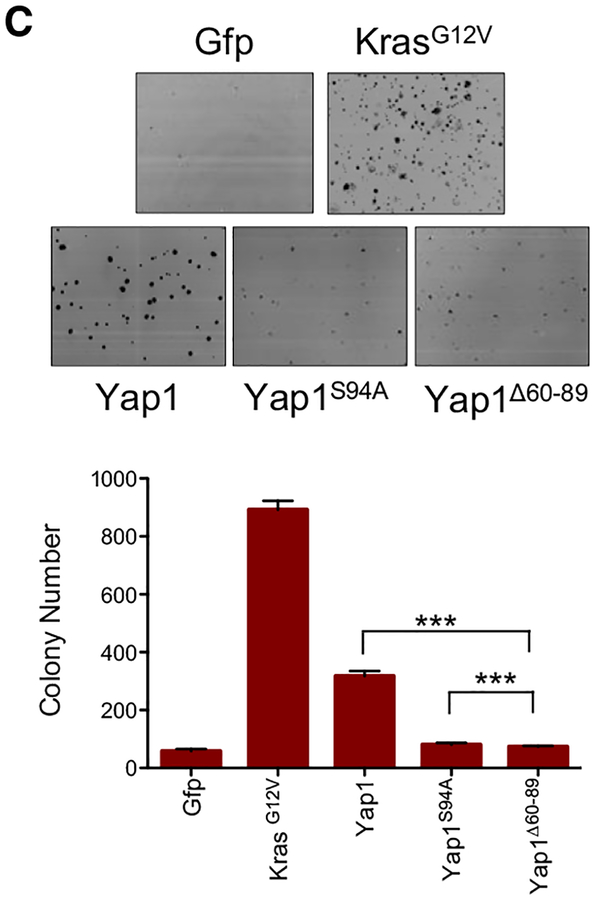During the assembly of the images for Figure 4C of this article, we inadvertently used different regions from a single delta 60–89 well to represent the GFP and delta 60–89 cells. Since the quantitation shown in the graph in Figure 4C was done independently of the figure assembly, this error had no impact on the data presented in the graph in Figure 4C or on the conclusions presented in the article. In addition, the home institution’s Research Integrity office conducted an independent review of one of the authors’ (A.K.) raw data and notebooks to ensure the validity of the findings. Here, we replaced the previous GFP image with the corrected image in Figure 4C.
Figure 4. Interaction of Yap1 with Tead2 Is Critical for Its Ability to Bypass KrasG12D Dependence.
(C) Sustained expression of wild-type Yap1, but not TEAD-binding-defective Yap1 mutants (YapS94A and Yap1Δ 60–89), can promote anchorage-independent growth of IKras cells off doxy. For each condition, five random fields were counted. Error bars represent SD of the mean. ***p < 0.001.



